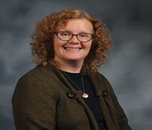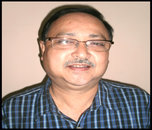Day 1 :
Keynote Forum
Domenico Pratico
Temple University Lewis Katz School of Medicine, USA
Keynote: Glucose deficit triggers tau neuropathology and cognitive impairments: Implication for brain aging and Alzheimer’s disease
Time : 9:30-10:15

Biography:
Domenico Pratico graduated from the University of Rome “La Sapienza”, School of Medicine as Medical Doctor, where he had completed a residency program in Internal Medicine. Later on he continued his post-graduation training at the University College Dublin, Ireland. Internationally known for his work on Alzheimer’s disease, Pratico is a Professor of Pharmacology, Microbiology and Immunology at Temple University, School of Medicine. He has authored over 230 original articles, and has received many awards for his research accomplishments, including the Irvine H. Page Award, Neurosciences Education and Research Award, the Zenith Award from the Alzheimer’s Association and the Dorothy Dillon Eweson Lectureship.
Abstract:
Several clinical investigations have highlighted a biological link between reduced brain glucose metabolism and subsequent energy deficits with dementia and Alzheimer’s disease (AD) pathogenesis. Previous studies have shown that brain glucose deficits can influence amyloid beta levels in vivo but no data are available on the effect that this condition might have on tau protein and the development of tau neurofibrillary tangles, the second most important lesions in AD brains. In this paper, we investigate the effect of chronic brain glucose deficits and energy dysregulation on memory and learning, synaptic function as well as the development of tau neuropathology in a model of tauopathy. Compared with controls, glucose deprived tau transgenic mice show significant memory deficits, impaired long-term potentiation, increased tau phosphorylation and neuronal apoptosis. Our studies demonstrate that reduced glucose availability in the central nervous system promotes directly the development of memory impairments, tau neuropathology, synaptic dysfunction, and neuronal cell death. Since restoring brain glucose levels and metabolism could afford the opportunity to positively influence the entire AD phenotype, it should be considered as a viable therapeutic approach for this disease and related dementias.
Keynote Forum
Lisa A. Hollis-Sawyer
Northeastern Illinois University, USA
Keynote: New age audit approach to assess older adults living environments for positive health outcomes
Time : 10:15-11:00

Biography:
Lisa A. Hollis-Sawyer received her doctorate in Industrial Gerontology from The University of Akron and conducted post-doctoral aging-related training at Boston University. Her research interests range from improving older adults positive aging health outcomes (physical, mental) through the creation of more support and sustainable living environments to specific areas of aging adaptation and adjustment (e.g., later-life education, eldercare, and aging workforce issues). She has coauthored three textbooks and authored/co-authored 39 scholarly articles. Presently, she is an Associate Professor in the Psychology department and Coordinator of the Gerontology program at Northeastern Illinois University in Chicago, IL (USA).
Abstract:
Increasingly, aging adults (e.g., Baby Boomers) will be wanting to “age in place” in their homes and workplaces. This is a reflection of the current and projected aging trends on a global basis (e.g., World Health Organization, 2015). A comprehensive content meta-analysis of existing “age friendly” guidelines (videos, checklists, workshops, books, research
articles) and assessment approaches (published tools) was conducted by two independent evaluators trained in assessment in order to develop both a much-needed “holistic” theoretical model of factors to consider when evaluating homes, workplaces, and larger communities and an associated assessment tool. Factors associated with the cultural, physical, psychological, social, and “logistical” design of an aging friendly environment for an older adult will be presented based on comprehensive review of books, published research, and published assessment tools designed for specific living environments. Results will discuss the implications and applications of both the comprehensive model and evaluation tool.
Keynote Forum
Agnieszka Batko-Szwaczka
Medical University of Silesia, Poland
Keynote: Mildly elevated blood pressure correlates with better functional status and may reduce the risk of cognitive impairment in centenarians
Time : 11:25-12:10

Biography:
Agnieszka Batko-Szwaczka has been graduated from Medical University of Silesia in year 2000, as a Medical Doctor. Later on she obtained her post-graduation from Medical University of Silesia with the specialties including Internal Medicine (2008) and Geriatrics (2012). For many years she also worked with the students as academic teacher. In 2007 she started working at Department of Geriatrics, School of Health Sciences, and Medical University of Silesia, Poland, where she has continued her research on centenarians. Presently she has been working at the same department on frailty syndrome. She is an experienced physician geriatrician and a very good didactics
Abstract:
Every year the life expectancy of human beings increases. Increase number of centenarians results from the advancing ageing of populations. Older people, including centenarians are more vulnerable to chronic illnesses, including dementia and high blood pressure. Hypertension is a proven independent risk factor of death and also is a well-recognized risk factor for vascular dementia and Alzheimer´s disease. Dementia describes a variety of symptoms that may include intellectual and mental defects. We have performed a cross-sectional study to characterize the clinical and functional state of Polish centenarians, with a special focus on blood pressure. The main goal of this study was to investigate a possible relationship between blood pressure, cognitive and physical performance in centenarians. The study comprised 86 consecutive 100.9± 1.2 years old (mean±SD) subjects (70 women and 16 men). The study subjects were followed up on the phone for at least 180 days after the examination. Seventy-one subjects (83%) survived 180 days or more. Survivors as compared to non-survivors had higher systolic blood pressure (all subjects mmHg 150.0±28.2, survivors: 153.2±28.4, non-survivors: 134.0±22.5, p 0.015) and mean arterial pressure (all subjects mmHg 101.5±16.5, survivors: 103.3±17.0, non-survivors: 93.1±11.2, p 0.019), higher MMSE score (all subjects 16.2±8.1, survivors 17.8±7.2, non-survivors 8.4±7.7, p <0.001), ADL (all subjects 3.21±2.16, survivors 3.61±2.02, non-survivors 1.33±1.84, p <0.001), Barthel Index (all subjects 57.8±31.9, survivors 63.9±28.4, non-survivors 29.3±33.1, p <0.001) and IADL score (all subjects 11.7±4.1, survivors 12.2±4.0, non-survivors 9.3±3.5, p 0.002). Mildly elevated blood-pressure in oldest-old patients may be beneficial.
- Geriatric Medicine and Health Care systems
Geriatric Medicine and Geriatric Care
Geriatric Medicine and Gerontological Nursing
Geriatric Medicine and Psychiatry
Location: Chattahoochee A

Chair
Merete Gregersen
Aarhus University, Denmark

Co-Chair
Quratulain Syed
Emory University School of Medicine, USA
Session Introduction
Quratulain Syed
Emory University School of Medicine, USA
Title: Dysgeusia in the elderly
Time : 12:10-12:40

Biography:
Quratulain Syed is a board certified internist and a geriatrician at Grady Memorial Hospital, Atlanta and Assistant Professor of Medicine at Emory University School of Medicine. She completed her residency in internal medicine at Mt. Sinai School of Medicine, NY and a fellowship in geriatric medicine at Loyola University Hospital, Chicago, IL. She is a member of the public education committee of the American Geriatric Society and the disparities task force at the Society of General Internal Medicine. Her clinical and research interests include care transitions in older adults, driving and firearms safety in older adults, elder abuse, polypharmacy and cognitive disorders. She has presented topics related to Geriatrics at the Society of General Internal Medicine annual and regional meetings, and the American Geriatric Society annual meetings during the past few years.
Abstract:
In older adults, disorders of taste and/or smell can affect appetite and oral intake and therefore affect the patient’s ability to maintain optimal nutrition. This can affect the individual’s strength, muscle mass, function, and quality of life. The National Health and Nutrition Examination Survey (NHANES) 2011-2012 reported that more than 5% of the over 142 million US respondents experienced taste disorders and more than 10% experienced smell disorder in the past 12 months. Additionally, older adults are challenged by polypharmacy and multiple comorbid conditions, which can affect their ability to differentiate between various intensities or concentrations of a tastant, leading to an increased intake of salt, sugar and exacerbation of chronic diseases such as heart failure and diabetes.
Learning objectives: At the end of this session, attendees by be able to:
- Describe the prevalence and etiology of taste disorders.
- Describe the association between taste and smell disorders and how disorders of smell can affect perception of taste.
- Initiate work up and develop a treatment plan for patients presenting with taste disorders.

Biography:
Lori Metzger holds a PhD in human development and a master’s degree in nursing with certification as an adult nurse practitioner. She is an assistant professor at the department of nursing teaching across undergraduate and graduate programs for Bloomsburg University of Pennsylvania. Additionally, she is co-founder and co-director of the center for healthy aging. Prior to teaching, she has spent 15 years practicing in home health and hospice caring for older adult’s population. During this time, she has come to appreciate the unique qualities of older adults and the new face of aging.
Abstract:
The telehealth in home health study aimed to determine patient’s satisfaction with technology in home health care as the population continues to age in the presence of chronic disease. Understanding patient’s perceptions regarding technologies in home care allows the practitioner to further understand one’s health belief and facilitate cues to changes in health behaviors towards management of chronic disease. The results of this study provide strength for the use of telehealth in home care and potentially contribute to the demand for reimbursement of telehealth.
Patient satisfaction was examined in older adult patient’s with heart failure in home health care. Eighty-six participants ranging in ages 59-99 with a mean age of 80.7 (sd = 8.9), voluntarily completed a questionnaire (HCSSI-R) of fifteen items. A comparison was made between and telehealth, home health services and usual home health care. An Analysis of Covariance (ANCOVA), frequency distributions and descriptive statistics were completed to answer the research question. A statistically significant difference was found indicating that the telehealth, home health group was more satisfied. When controlling for the demographic information about age, gender, prior home health services and living alone status, there was no significant impact on the patient satisfaction score.
It has been proven that telehealth in home care is cost-effective and produces favorable clinical outcomes in the management of chronic disease (Dansky, Vasey & Bowles, 2008; Hoban, Fedor, Reeder & Chernick, 2013). This study concludes that telehealth in home health care provides for a highly satisfied home health client managing chronic disease.
Vered Raz
Leiden University Medical Center, The Netherlands
Title: Age-associated molecular patterns in the elderly are tissue-specific
Time : 14:00-14:30

Biography:
Vered Raz has been graduated from The Wiezmann Institute of Science in Israel as a molecular biologist. She followed up post-doc positions at the University of Pennsylvania, USA, and Wageningen University, The NL. Presently she is having a Lecturer position at Leiden University Medical Centre, department of Human Genetics in The Netherlands. Her research is focused on molecular regulation of aging muscles and the role of RNA processing in aging.
Abstract:
RNA landscape has dynamically changed with age and substantial changes are associated with aging. Age-associated trends of RNA expression profiles could provide an objective description of physiological aging process and molecular signatures of aging could be extracted. Unravelling patterns of age-associated changes could help understanding the process of aging.
A new statistical method has been developed to extract age-associated patterns from RNA expression profiles of cross sectional studies. With this method technical differences between studies can be overcome, and thus tolerating an age-associated comparison between tissues and different biological groups.
The age-associated molecular patterns were found to be different between tissues and tissues may age at different rates. Some tissues may be more resistant for age-associated changes compared with other tissues. In some tissues, like blood and kidney cortex, major molecular changes are restrained around mid-seventies, whereas in other tissues, like skeletal muscles and brain cortex, major changes occur first at midlife and secondary during mid-seventies of age.
Incorporating this data into a health care program could be beneficial to improve healthy aging and decisions for clinical acts in the elderly.
Langhit Kurar
University of Bristol, UK
Title: Clinical audit of ankle fracture management in the elderly
Time : 14:30-15:00

Biography:
Langhit Kurar is a trainee orthopaedic surgeon, specialising in major joint fixation including trauma and is the local trainee representative at Darent Valley Hospital in Dartford, UK. He has presented published work on both ankle fracture management and clinical research on syndromic disease at both national and international level spanning 10 countries. His research has been funded by the University of Bristol and has paved the way to novel treatment regimen for Apert and craniosynostosis syndromes. His educational profile includes published work on undergraduate and postgraduate revision tools. He has organised international conferences as well as adopted numerous managerial roles within his district including academic, teaching, and British Medical Association positions.
Abstract:
INTRODUCTION: Ankle fractures in the osteoporotic patient are challenging injuries to manage, due to a combination of poor soft tissue, peripheral vascular disease and increased bone fragility, often resulting in more complex fracture patterns. I aim to audit current practice and introduce change by producing recommendations to help improve long-term functional outcomes.
PATIENTS AND METHODS: A retrospective 3-week audit was conducted reviewing the results of ankle fracture management in 50 patients aged between 50-80 years. Patients admitted for either manipulation under anaesthesia (MUA)/application of the cast or open-reduction and internal fixation (ORIF) were considered. Medical notes, including discharge summaries were used for data extraction.
RESULTS: From the 50 patients included within the cohort, forty-two patients (84%) underwent surgical intervention, with eight patients (16%) managed non-operatively. Malunion (63%) and failed fracture fixation (25%) were more commonly reported in patients managed non-operatively. Surgery performed by trainee surgeons was unlikely to prolong theatre time with no statistical significance observed with the consultant led cohort (p=0.380). However, incidence of fracture malunion and failed fixation was significantly higher following surgery without consultant supervision in the junior trainee group (p=0.043).
CONCLUSIONS: Poor bone quality and associated co-morbidity can present technical difficulties when managing patients surgically. However, our results have shown considerably improved anatomical reduction rates following internal fixation in eligible patients, irrespective of age or gender.
Lene Holst Pedersen
Aarhus University Hospital, Denmark
Title: Early geriatric follow-up after discharge reduces readmissions
Time : 15:00-15:30

Biography:
Lene Holst Pedersen is a PhD student at Aarhus University. She is a medical doctor specializing in geriatrics at Aarhus University Hospital. In the spring 2016, she published an article on early geriatric follow-up in the journal European Geriatric Medicine.
Abstract:
As part of a Triple Aim project, we examined the effect of an early geriatric follow-up after discharge in a quasi-randomized controlled trial of geriatric patients (≥75 years) acutely admitted to the emergency department with one of nine diagnoses: pneumonia, COPD, delirium, dehydration, urinary tract infection, constipation, anemia, heart failure, and other infections. The intervention consisted of a follow-up visit to the patient’s home on the first working day after hospital discharge.
The visit was performed by a nurse and a geriatrician and tailored to the patient’s need. The control group was discharged according to standard procedures, which included follow-home or telephone follow-up.
From June 2014 to November 2015, 1330 patients were included. We found a statistically significant reduction in the readmission rate in the intervention group compared to the control group (12% vs. 23%; P < 0.001). The adjusted hazard ratio in the intervention group was 0.50 (95% CI: 0.38-0.65). In the intervention group more patients were discharged directly from the emergency department, instead of being transferred to the geriatric ward, compared to the control group (56% vs 49% p=0.01).The intervention reduced the length of the primary hospital stay median 2 days (1–7) vs. 3 days (1–8) in the control group (p= 0.03). Preliminary data on 30 and 90 day mortality show no statistically significant difference between the groups.
Barun Mukhopadhyay
Indian Statistical Institute, India
Title: Does living arrangement determine mental health profile among the elderly?: An anthropological study in West Bengal, India
Time : 15:30-16:00

Biography:
Barun Mukhopadhyay has obtained his Ph.D. in Anthropology in 1989 from the University of Calcutta and working at the faculty of the Indian Statistical Institute since 1991. His major areas of interest are aging studies and bioethics. He has published so far 67 papers in reputed journals and conference proceedings. He serves as the consulting/Associate editor of two international journals.
Abstract:
Co-residence of elderly parents with children and grandchildren is believed to be rewarding for satisfactory intergenerational relation. This is very much common in the Indian society. However, the percentage of elderly persons living alone has increased during the past few decades, especially in the urban locales in India. The present study is aimed to evaluate the mental health profile in terms of selected mental health traits in order to examine the relationship between living arrangements and mental health profile of the elderly living in a city and a rural locale in the Indian State of West Bengal. The study is conducted among middle class, educated economically stable Bengalis inhabiting the Salt Lake City, Kolkata and their less-educated, less-economically stable rural counterparts in Paschim Medinipur district, West Bengal, India. The study sample consists of 450 elderly of both sexes aged between 65 and 79 years. Information on mental health traits and type of living arrangement is obtained using interviewer-administered questionnaires. The results clearly indicates the relatively worsened mental health profile of the urban elderly irrespective of sex living in the extended families, measured in terms of loneliness, anxiety, depression, perceived stress, and quality of life compared with those living in nuclear families. Living arrangement, however, doesn’t significantly affect mental health among the rural elderly. The present study interestingly demonstrates the negative aspects of living with children and grandchildren in terms of relative mental health adversity of the elderly in an urban Indian setting, contrary to general expectation in the Indian society
Chiung-Jung Wen
National Taiwan University Hospital, Taiwan
Title: The differences of osteoporosis awareness and its association with 10-year fracture risks between female breast cancer survivors before and after the menopause age
Time : 16:20-16:50

Biography:
Chiung-Jung Wen is an attending physician in the Department of Geriatrics and Gerontology in National Taiwan University Hospital. She completed her PhD training in the Graduate Institute of Epidemiology and Preventive Medicine, College of Public Health of National Taiwan University in Jan 2015. Currently, she is the secretary general of Taiwan Health Evaluation and Promotion Association and also the deputy secretary general of the Taiwan Association of Gerontology and Geriatrics.
Abstract:
Background: To compare the osteoporosis awareness and its association with 10-year fracture risks between young and old breast cancer survivors.
Methods: In 2011 “Pink October” campaign was hosted by the Taiwan Breast Cancer Alliance and the Taiwanese Osteoporosis Association, questionnaires on osteoporosis awareness and Fracture Risk Assessment Tool (FRAX®) variables were distributed. Data from participants ≥40 years of age (N=807) were analyzed. Comparisons were made between those below and above 50 years of age, also among different tertiles of predicted fracture risk groups.
Results: Mean age was 56.0±7.7 years. Only half (52.7%) showed a high level of osteoporosis awareness. Older survivors were more likely to exhibit higher awareness levels (55.0% vs. 44.8%; p <0.05). Moreover, osteoporosis awareness is increased among high predicted 10-year major osteoporosis fracture risk groups. Older survivors (age ≥50 years) also had a higher body mass index, higher prevalence of secondary osteoporosis and higher predicted 10-year fracture risk (p< 0.05).
Conclusion: Osteoporosis awareness levels were higher among older and higher fracture risk breast cancer survivors. Educational program and osteoporosis prevention strategies may start with younger and lower fracture risk breast cancer survivors to increase the awareness in order to reduce under-managements of osteoporosis.
